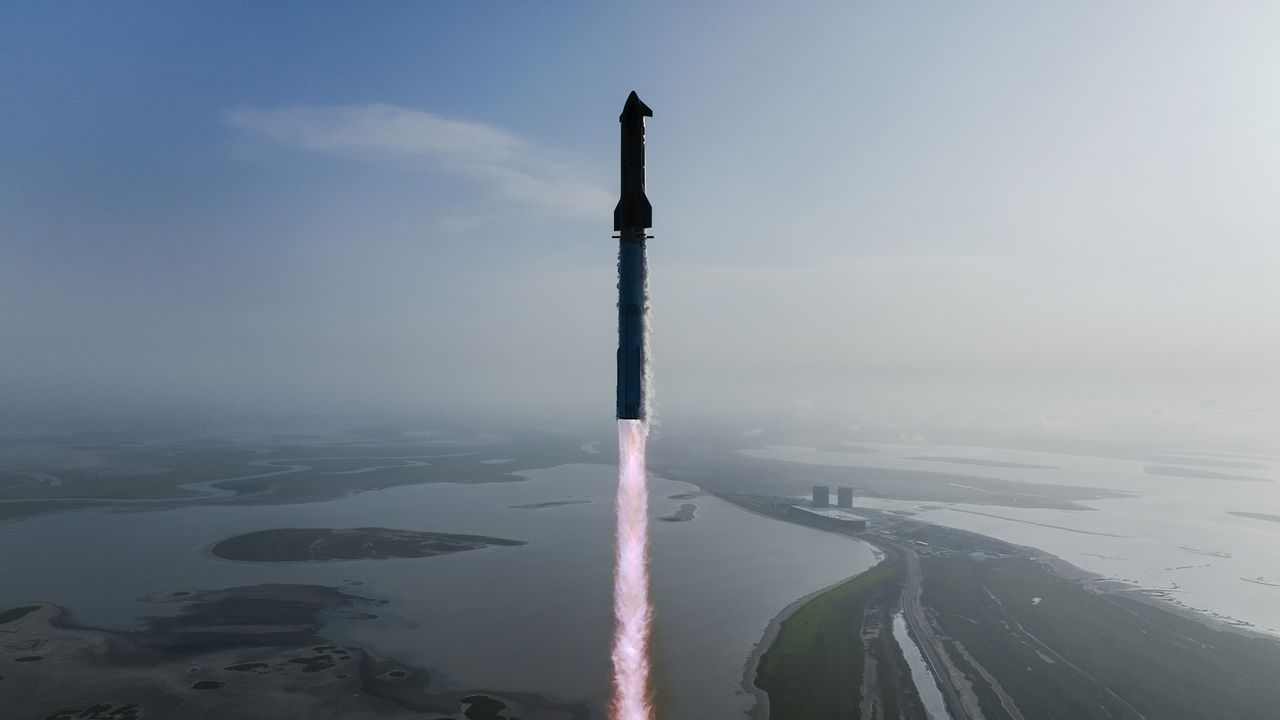SpaceX has announced its plan to launch the tenth integrated test flight of its Super Heavy Starship vehicle on August 24, 2025, with liftoff scheduled from the company’s Starbase facility in Texas. The launch window is set to open at 19:30 EDT (23:30 GMT). This announcement was made via a post on the social media platform X on August 15, marking a slight delay from earlier predictions by CEO Elon Musk, who had estimated a launch within three weeks in mid-July.
Flight 10 represents a pivotal moment in the ongoing development of the Starship program. It is the fourth test flight for the year, following three previous missions that concluded with the loss of the upper stage. Each setback further tightens the timeline for Starship to meet its critical role as the lunar lander for NASA’s Artemis 3 mission, which aims to return astronauts to the moon in 2027.
Standing approximately 394 feet (120 meters) tall when fully stacked, the Super Heavy booster and Starship upper stage are key components of this ambitious project. For the upcoming flight, SpaceX will utilize Booster 16 and Ship 37, both of which are Block 2 variants. Each flight aims to incorporate incremental upgrades to enhance the vehicle’s performance and reliability.
This launch follows Flight 9, which took place on May 27, and ended with the upper stage disintegrating in space 45 minutes after launch. Just weeks later, on June 18, a static test fire at Starbase resulted in an explosion that destroyed Ship 36, originally designated for Flight 10, and caused damage to SpaceX’s test infrastructure.
Following the completion of investigations into these incidents, Starship Flight 10 is now set to proceed with a clear set of mission objectives. Upon reaching space and after stage separation, Starship will deploy eight mass simulators for Starlink satellites, perform an in-space relight of its Raptor engines, and attempt a controlled splashdown in the Indian Ocean. Meanwhile, Booster 16 will adjust its trajectory to ensure a controlled splashdown in the Gulf of Mexico.
Of the nine previous Starship test flights, several have demonstrated partial successes, notably including the recovery of a Super Heavy booster using the launch tower’s “Mechazilla” chopstick arms for refurbishment. Despite this, the program has not yet achieved all mission objectives from launch to landing.
SpaceX is actively developing Starship under Musk’s vision of making human life multiplanetary by enabling journeys to Mars. The vehicle is also integral to NASA’s ongoing Artemis program, which aims to facilitate long-duration missions to the lunar surface. As anticipation builds for Flight 10, the success of this mission will be crucial for the future of both SpaceX and human space exploration.





































































